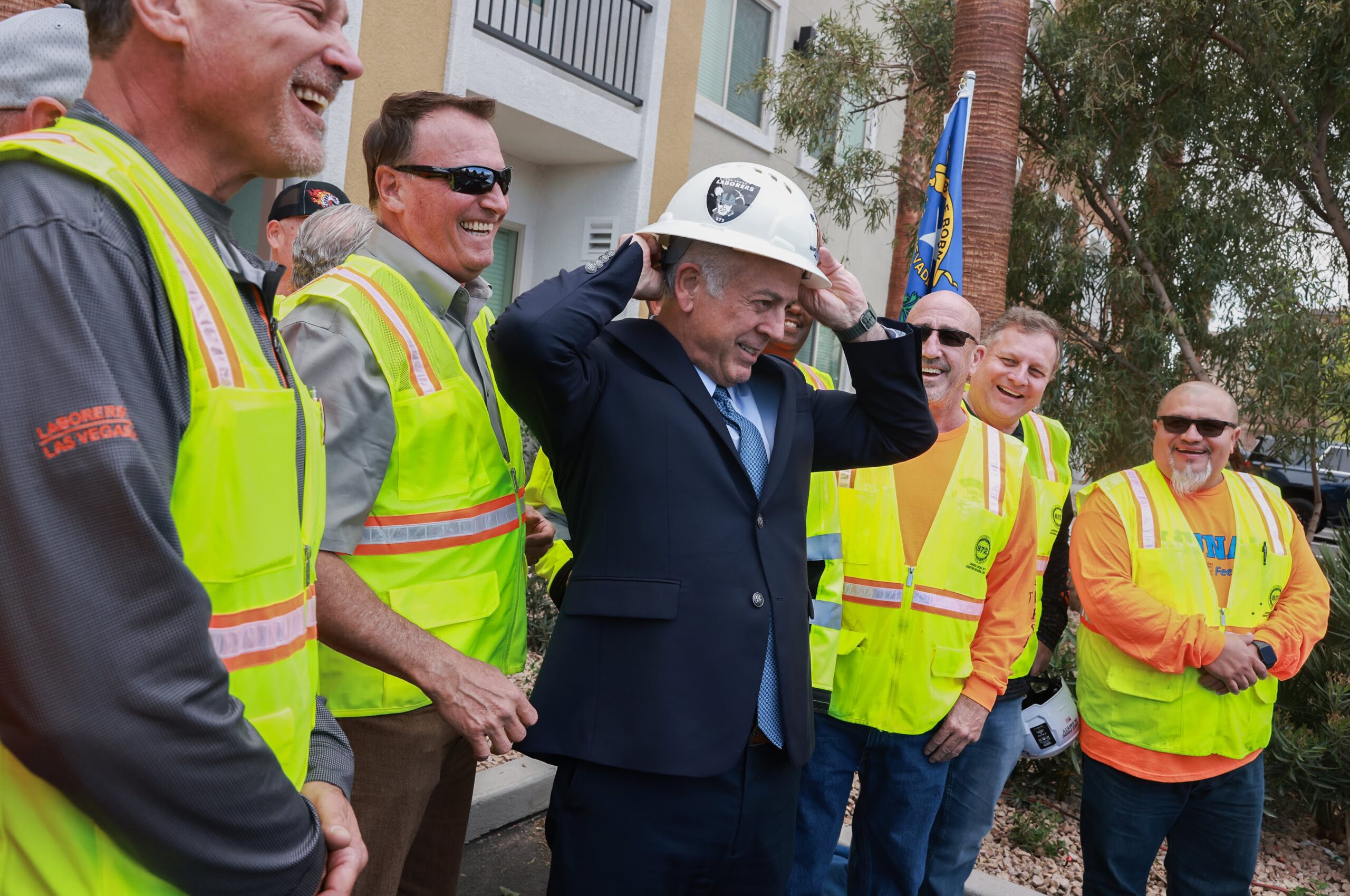Homebuilders say Lombardo’s housing bill will help, but not solve, affordable housing crunch

Gov. Joe Lombardo’s marquee housing bill could speed up permitting and review processes for housing projects in a state with a severe affordable housing crisis, but industry experts fear uncertainty over federal policies could delay construction or increase prices.
Several experts voiced concerns about tariffs and federal land ownership in a “State of Housing” panel hosted by the Southern Nevada Home Builders Association on Monday in Las Vegas. Tina Frias, the group’s CEO, said that Nevadans won’t immediately see tangible differences from Lombardo's bill.
“The governor's housing bill, which is certainly a step in the right direction, is a piece of a bigger supply challenge,” Frias said in an interview.
Of the five policy bills the governor can bring forward during a legislative session, Lombardo’s housing bill, AB540, was the only one of his bills to pass — eking out of the Senate in the final moments of the state’s legislative session, which ended in June.
One of AB540’s main provisions allocated $133 million to support development of a new tier of housing called “attainable housing.” Traditional affordable housing is geared toward people with lower incomes; governments use a variety of policies to incentivize its development and ensure people with lower incomes can live there.
Under the bill, those making up to 150 percent of the median income in a given geographical area would be eligible for that new tier of attainable housing. For example, if the median income in a given area is $70,000, a person making up to $105,000 would be eligible for attainable housing.
Lombardo’s push to address the issue comes as the cost of housing in Nevada has risen far faster than wages, and housing expenses are putting more of a burden on Nevadan family budgets than government standards define as affordable.
The state ranks sixth in the nation for excessively cost-burdened homeowners and second in the nation for excessively cost-burdened renters, according to a report from the Guinn Center for Policy Priorities. Excessively cost-burdened is defined in the report as spending at least 35 percent of gross monthly income on housing costs such as rent, mortgage payments, insurance, utilities and homeowners association fees.
“The shortage of affordable rental units for extremely low-income households is at a crisis level, with only 14 available units per 100 such households. This is by far the lowest rate in the nation,” the report stated.
Lombardo’s bill also required local governments to expedite reviewing processes for attainable housing projects, which enthused industry experts.
The bill should help local and state governments “be able to find room to accelerate approvals and to make it less cumbersome,” longtime lobbyist and panelist Greg Ferraro said in an interview, adding that the quicker processes will allow homebuilders to get homes on the market sooner.
Tariffs and land availability
The issue of limited land availability must be worked on in order to have a real impact for Nevadans, Frias said.
About 85 percent of land in Nevada is owned by the federal government, and getting approval for easements, rights-of-way or other access to land owned by the federal government can take years, she said.
Sam Gilboard, the director of federal legislative policy at the National Home Builders Association, said during the panel that he remains optimistic federal land will be available for sale soon. It may not show up in the current Republican reconciliation bill that passed the Senate and awaits action in the House, he said, but the issue has enough of a spotlight for future legislation.
Uncertainty over the Trump administration’s increased tariffs will also play a major role on homebuilding costs.
“We've estimated [that] about 7 percent of the material goods, appliances that go into a home originate from a foreign country,” Gilboard said during the panel.
Even without tariffs, prices for those materials have increased about 41 percent in the past five years, he said.
“The reality is, yes, tariffs do increase the cost of building, and they do increase the cost that homebuyers will see when purchasing their home,” he said.
Immigration policies and workforce shortages
The ongoing federal immigration crackdown and workforce shortages are also affecting how fast the industry builds homes.
Gilboard predicted “some real, powerful bipartisan efforts in Congress” to find a way to legal status for undocumented workers, which he said would be “applicable” to the homebuilding industry.
Gilboard said a loss in available workers, wage increases and other labor shortages could lengthen construction timelines and have up to a $10 billion impact on the industry.
“And because of labor shortages, the average construction timetable was extended by about two months," Gilboard said.
